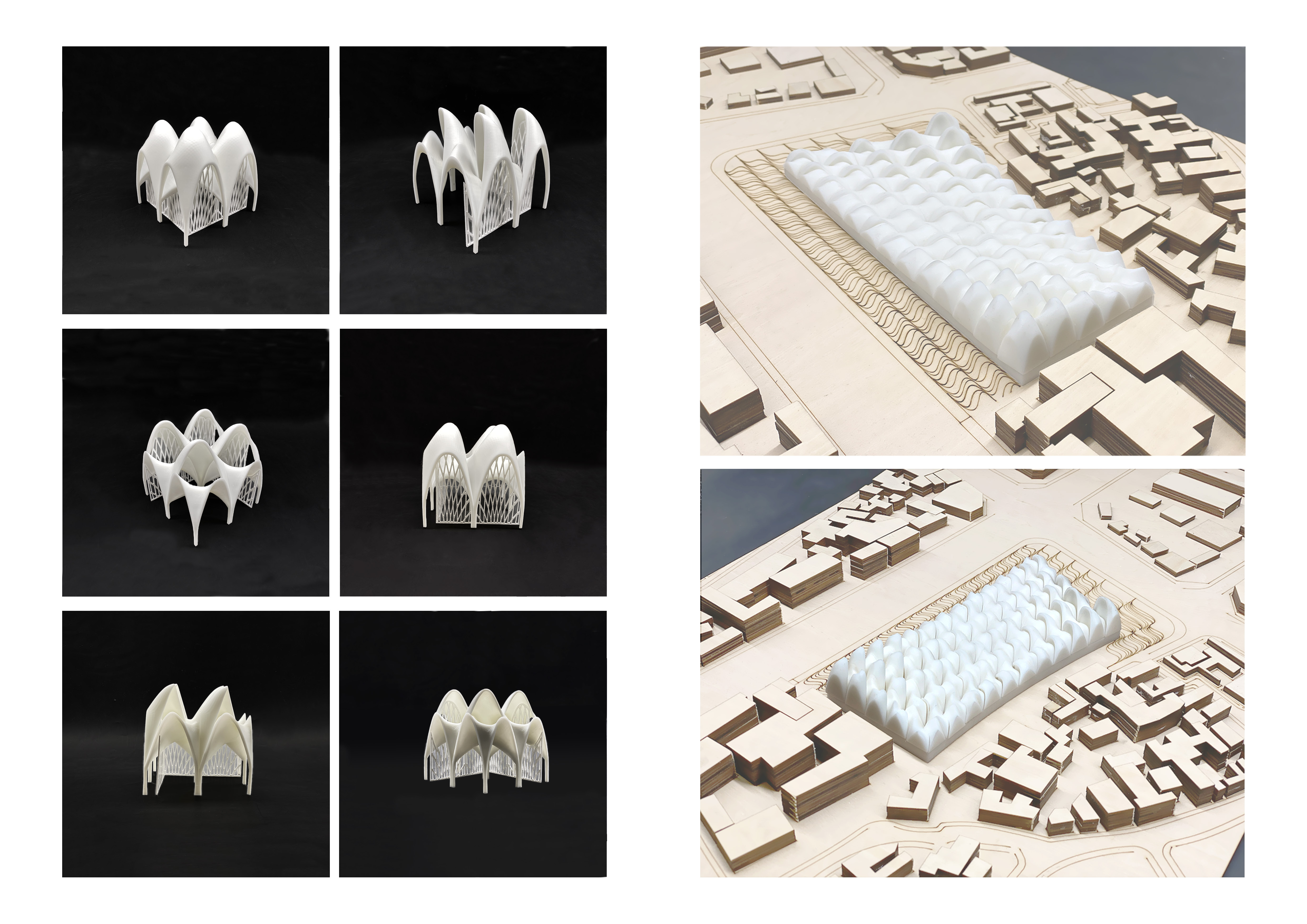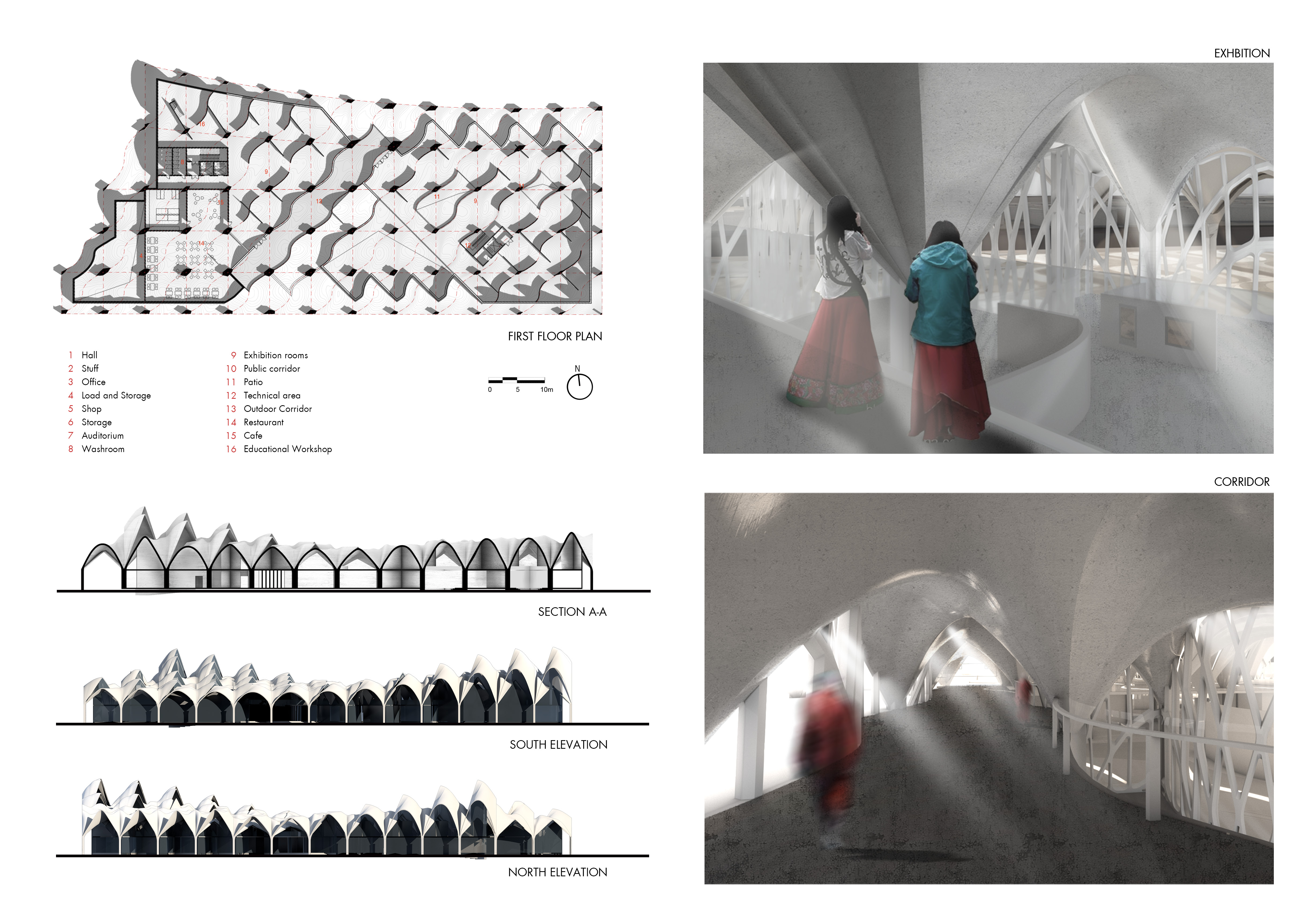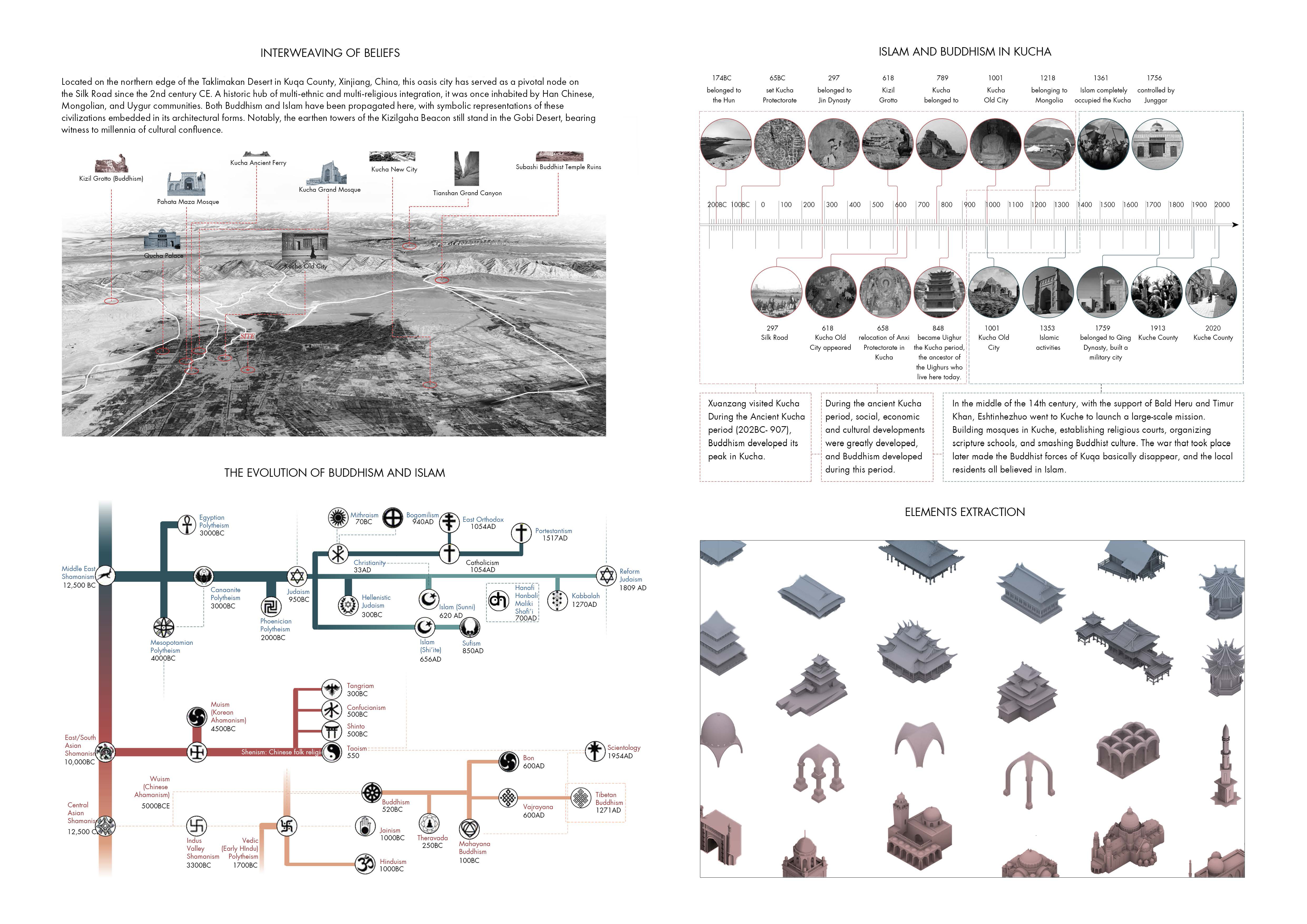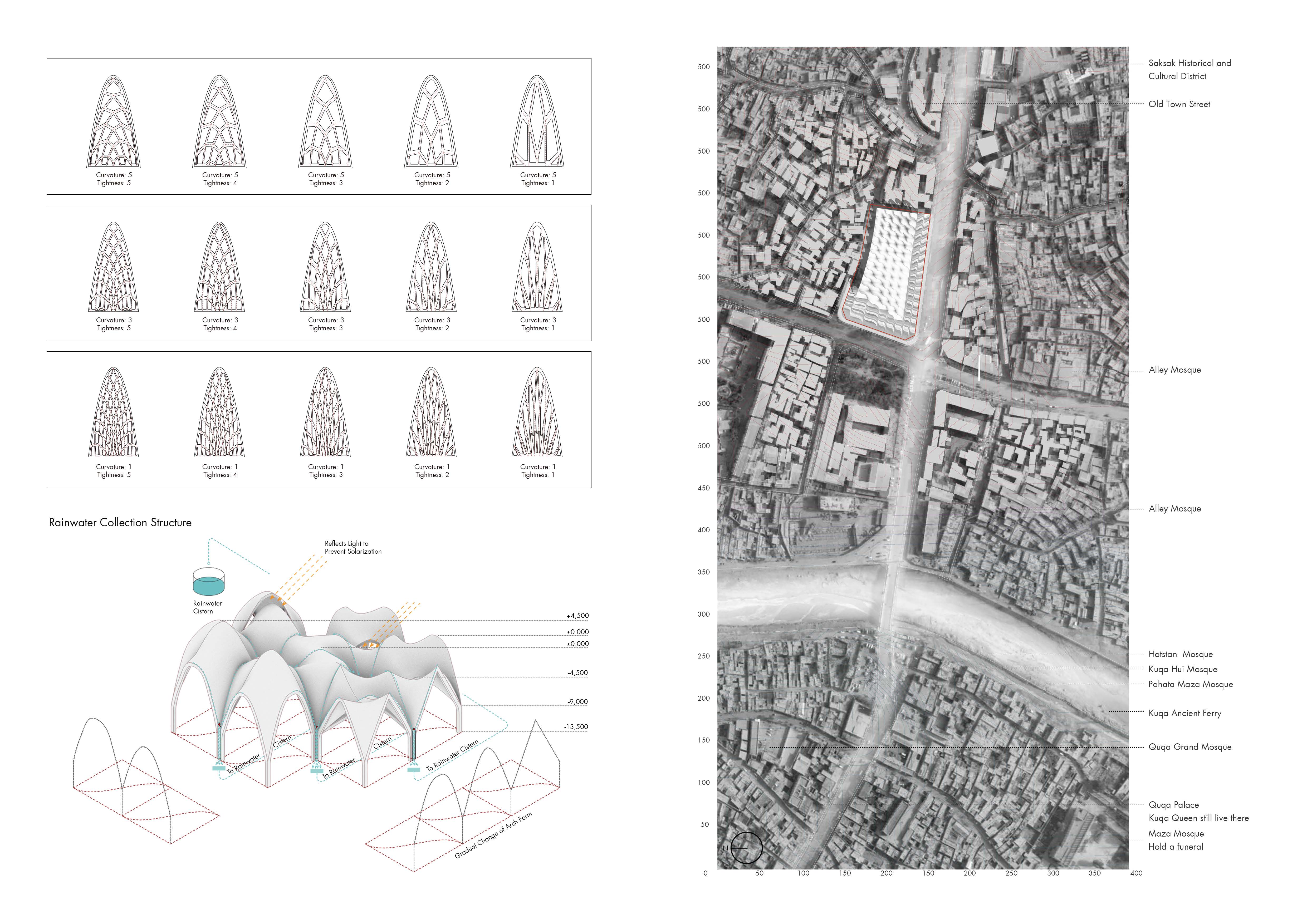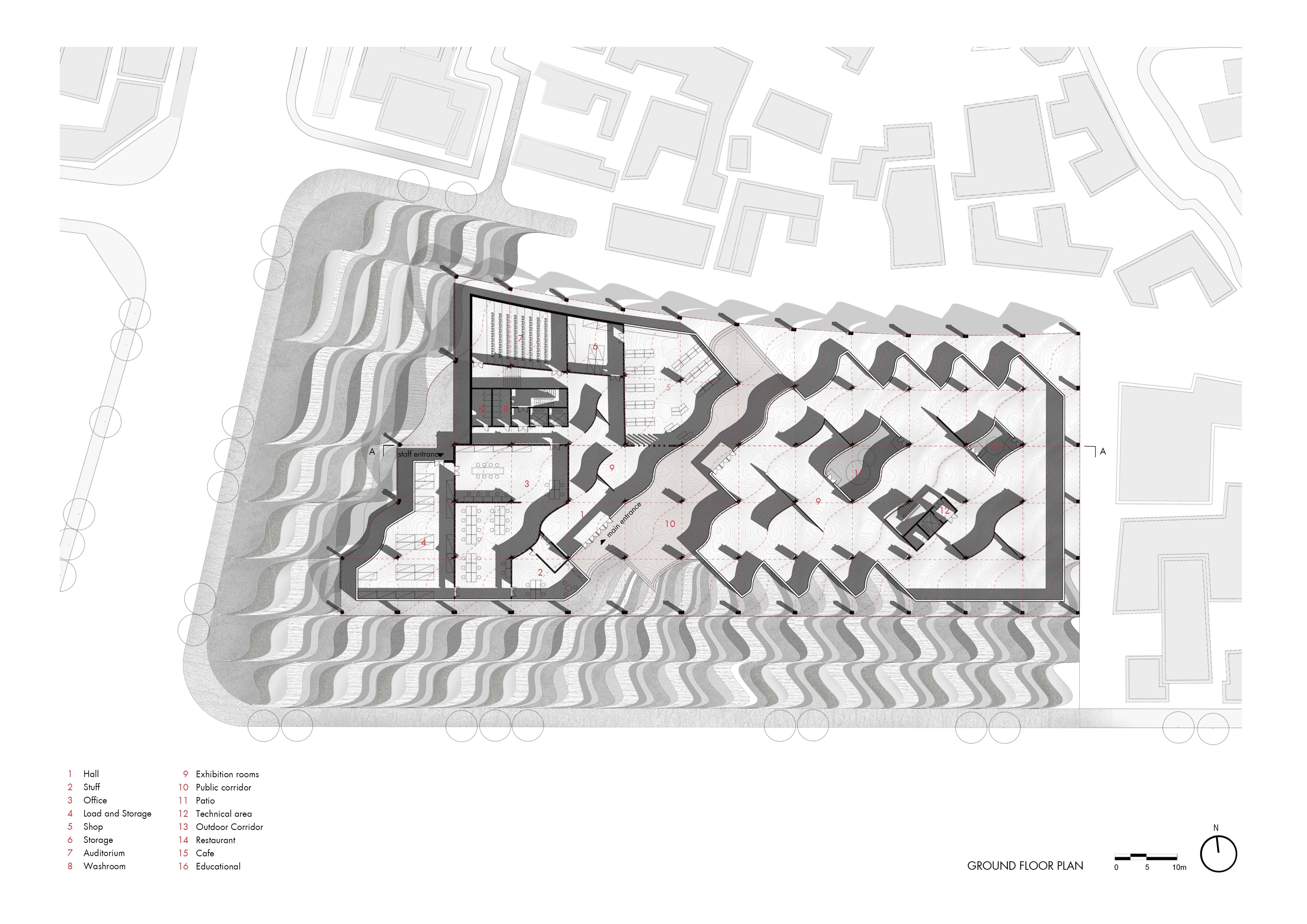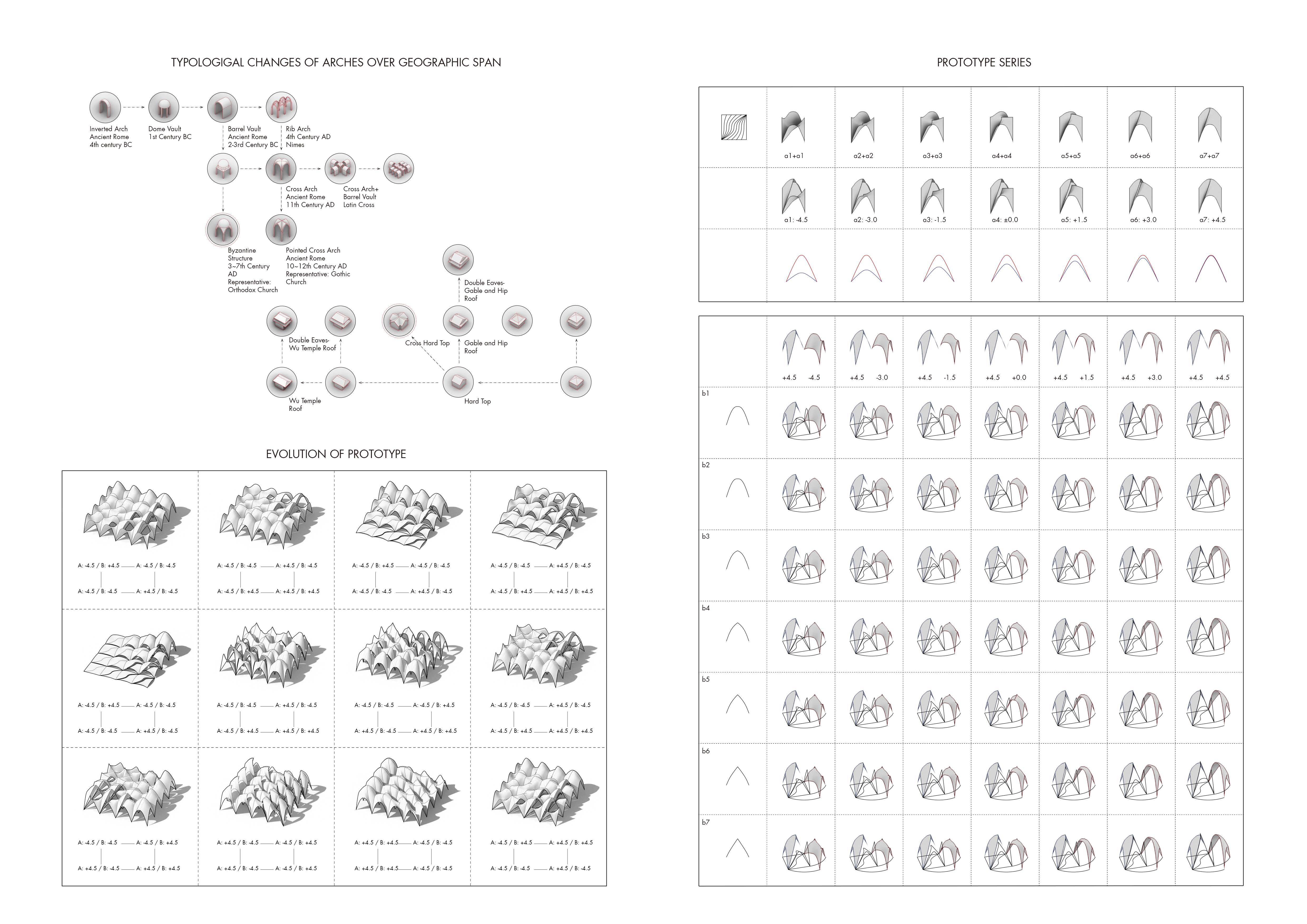Architecture Design Category - Conceptual, Modular & Pre-fabricated Architecture
Progressive Metaphor-Kuqa Multi-Religious Museum
-
Prize(s):Gold
-
Location:Kuqa, Xinjiang Province, China
-
Company Name:Fa[x] Studio
-
Lead Designer:Yutong Qiu, Liwei Chen
-
Image Credit:Yutong Qiu, Liwei Chen
Description
Historically, buildings like the Hagia Sophia in Istanbul and the Mosque–Cathedral of Córdoba in Spain have embodied different cultural and religious meanings across time. However, examples of a single building simultaneously representing multiple cultural or religious identities remain largely unexplored.
In today’s globalized world, driven by technological advancement, people from diverse backgrounds show a growing openness to cultural exchange. This social context shapes the foundation of the project, located in Kuqa County, Xinjiang—once a vital hub on the Silk Road and the capital of the ancient Kingdom of Kucha. Though quieter now, Kuqa remains home to a mix of ethnicities, religions, and cultures.
The project is a museum of multi-faith integration. It draws on Islamic arches inspired by Gothic vaults and the traditional Chinese large roof to reinterpret and blend cultural symbols in a contemporary form. While cultural and ideological conflicts persist globally, this design aims to offer a meaningful architectural response—commemorating coexistence through the transformation and renewal of traditional forms in a site rich with historical narrative.
© 2024 All Rights Reserved, International Competition Association Inc



